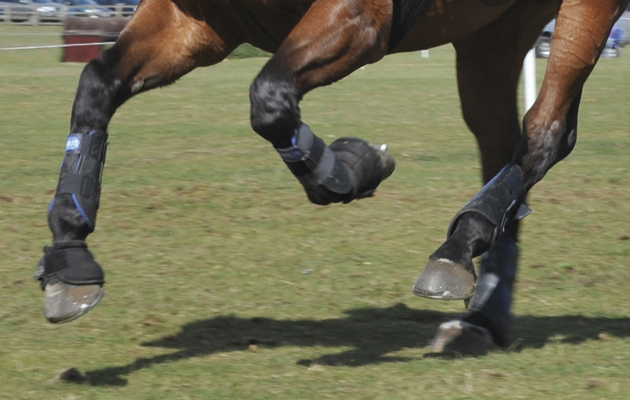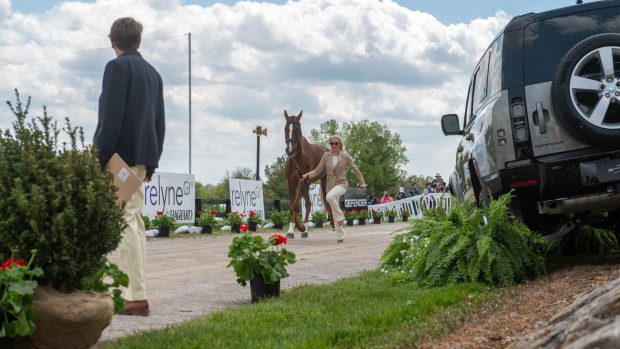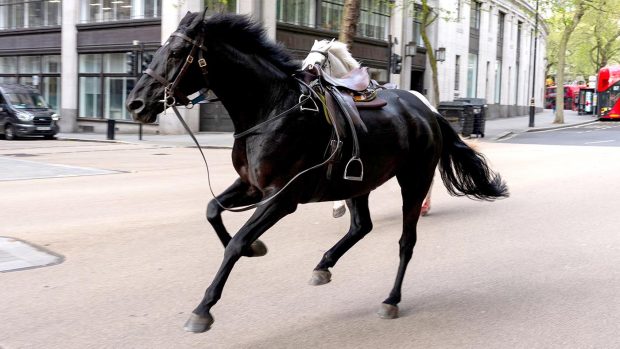What therapy regimes do top riders follow in order to keep their horses in peak condition? Stephanie Bateman investigates…
With a multitude of therapy equipment available on the market today, all promising to deliver effective therapeutic treatments to our horses, what do the top riders use on a daily and post-competition basis?
International event rider Alex Bragg finds electro magnetic pulse rugs really beneficial and all his horses see a physiotherapist regularly.
“It’s all to do with symmetry and ensuring the horses are fit and well in their bodies so that they can perform in a balanced and symmetrical way,” he says. “If you want them to do everything symmetrically, you need to make sure that their bodies feel good. They need to be comfortable so that they will work hard on both sides of their body and not avoid using themselves because it’s sore. That’s when you end up with compensation and crooked horses.”
Alex also advocates hill work and swimming.
“We do a lot of hill work and have access to a swimming lane where we swim a few horses,” he adds. “Polework is also really important for strengthening work and we sometimes use magnetic wraps on their legs which are good if you have a horse with a known leg injury or a leg that swells or is sore in the joints.”
Carl Hester’s groom Alan Davies follows a comprehensive therapy regime with the horses.
“We take the grand prix horses to the water treadmill at Hartpury once or twice a week throughout the year because it’s a great way of getting them fit without placing undue stress on their lower joints,” says Alan. “They go on it for 20 minutes at a time with the water at knee and hock height, and it’s a great anaerobic workout.”
Alan also stands the horses under the solarium while tacking up and un-tacking to keep their muscles warm, and they will also wear an FMBS Activo-Med Combi Pro rug to help with relaxation and blood flow before and after exercise.
“Every week our physio comes to treat the horses and she will often use a TENS machine or ultrasound if the horses need a specific muscle working on,” adds Alan. “We also use Finn-Tack ice boots on the horses after a strenuous workout to ensure the tendons don’t get too hot.”
Event rider Laura Collett is also a firm believer in magnetic rugs.
“My top horses have the FMBS Activo-Med Rug on at home for 40 minutes every day and at competitions before dressage,” she says. “At a three-day event they also have it on after cross-country and before the trot-up to help with keeping them soft and supple.
“Ours also see a physio once a month to ensure they are comfortable and there are no problems that need addressing.”
Dressage rider Michael Eilberg’s horses also see a physio and chiropractor monthly.
“I also use the Back On Track products on a daily basis, and for horses that are especially sensitive or weak, I also use an Equissage Pulse pad.”
Yorkshire-based point-to-point trainer Jacqueline Coward uses a different type of therapy on her horses.
“I like acupuncture and use that pre- and post-racing on some of our horses,” she says. “It really helps them to recover and be in good shape for the next race.”
Dressage trainer and rider Gareth Hughes uses electro-magnetic therapy units on his horses, especially on old leg injuries.
“We also use Cyclo-Ssage units on the horses before they are ridden every day to help them warm up and be supple.”
Paralympic dressage rider Sophie Wells finds using the FMBS Activo-med pulse magnetic rug before her horses work and compete very effective.
“I also use ice boots after they have worked hard to bring the temperature of the tendons back down to a safe temperature and help prevent injury.”
Laura Tomlinson’s dressage horses also wear a FMBS Activo-Med magnetic rug most days and always at a show.
“They also have weekly massage/physio treatments and they have pre-/post-work exercises that the grooms do with them from core activation to stability and simple stretches,” she says. “We use the magentic rug as either a warm up programme or regeneration programme after work for around 20 minutes.”
Showjumper William Whitaker is another advocate of ice boots which he uses daily after flatwork and jumping alongside a magnetic rug before and after jumping.
“We have a very good equine physio that sees the horses at least every three weeks,” adds William. “We also do carrot stretches with the horses that need it. We try to keep the therapy-related treatments simple but effective which I think is better for the horses.”
Article continues below…
You might also be interested in:

Cool your horse’s precious pins with these 12 ice boot options

14 ways to keep your horse’s legs healthy
Follow our handy check list to keep all four limbs healthy

Subscribe to Horse & Hound this spring for great savings
Event rider Ben Way uses massage pads pre-competition, alongside ensuring his horses have regular phsyio treatments to keep his horses comfortable and minimise muscle tightness.
“We try to turnout as much as possible which is great physically and mentally, and all our horses are tacked up under our Drimee infrared solariums (especially on cold days) to ensure that their top line is warm a relaxed before they start work,” says Ben. “After work we wash the horses off using our Kylix hot water system before again drying them off under the solariums.”
At a competition, Ben uses a lot of cold boots which sit in iced water before being applied after the cross-country.
“We are lucky enough to have the River Leam running through our farm and the horses love being taken down to stand in the cold running water which is great for their legs.”
For all the latest news analysis, competition reports, interviews, features and much more, don’t miss Horse & Hound magazine, on sale every Thursday. Plus in the latest issue, out today (31 January 2019), don’t miss our kit special which includes information on therapy rugs and some great therapy products to help keep horses happy.





